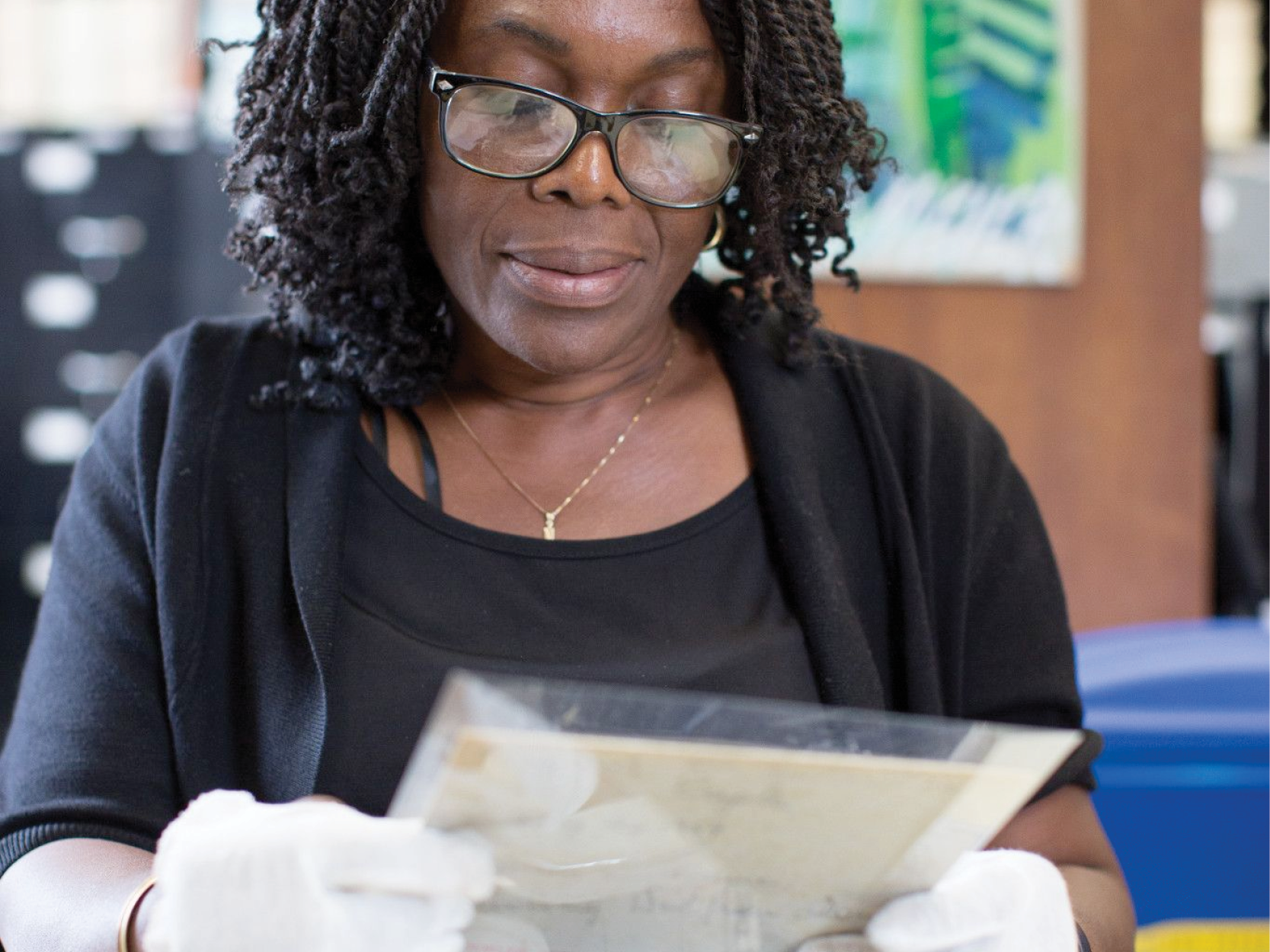
In the 1880s, two New Yorkers burst into the competitive scene of cloth book cover design: Margaret Nielson Armstrong (1867–1944), a Manhattanite, and Alice Cordelia Morse (1863–1961), a Brooklynite. They became two of the major forces behind the art's golden age, which lasted from about 1880 to 1910. Fourteen of their works are on display at the Center for Brooklyn History, now through June 2024.

Some context...
In 1893, the World’s Columbian Exposition showcased women’s artworks amidst a flurry of controversies from sexism to racism. The exhibition intended to elevate women’s work in the post-Civil War climate in which single / widowed women were striving to support themselves. Women were considered to have a stronger eye for design than men and skills in the artistic fields offered them “socially acceptable” career opportunities. The Exposition propelled (primarily white) female artists into the spotlight and led to women’s domination of particular art genres, including book cover design. Two of the artists exhibited were Armstrong and Morse.

Their styles...
Both artists favored flourishing botanical designs that play with horizontal and curvilinear line, as was popular during the Art Nouveau movement of the day (1883-1914). These designs often appear on jewel-tone cloth in colorful and metallic (typically gold) stamped patterns. Both artists sometimes employ heavy outlines, a style believed to have been drawn from their experiences with stained glasswork. They also each crafted their own fonts, which have aided collectors in attributing their works. In distinguishing one artist's designs from the other, it might be said that Armstrong was more likely to fill the full cover, employ scientifically accurate botanicals, and use dotted borders, while Morse used more central cartouche designs and employed more historically classical symbols. That said, they certainly were not restricted to these generalizations and often worked well outside them.
The publishers...
Though cover design was the frontline weapon in the publisher’s arsenal of sales tactics, the artists typically went uncredited until the mid-1890s. At this point, Armstrong and Morse, like many cover designers, began stamping their works with a stylized monogram, turning their covers into collectibles and amassing followers.

Publishers recognized the value that Armstrong’s and Morse’s designs added to their books and commissioned matching bindings for literary sets, drawing buyers back to their stores to collect the full run of flashily bound volumes. When a new book was advertised in the papers, Armstrong’s or Morse’s names were often mentioned as well, indicating their work's pull on audiences.

The women behind the design...
Working in the same niche sphere and living in the same city, these women absolutely knew of one another, but it’s unknown exactly what their opinions were. There was no evident rivalry and only minimal praise. During the Columbian Exposition, Morse, the chair of the sub-committee on Book-Covers, Wood-Engravings, and Illustration, wrote a piece on the exhibited cover designs and commented on Armstrong’s work: “Mrs. Sarah W. Whitman* of Boston and Margaret N. Armstrong have taken a firm hold on the publishers, and won recognition from the public, by their appropriate, tasteful, well-studied book decoration.” (The editor of the piece, Maud Howe Elliott, added a footnote here saying, “Miss Alice C. Morse, the writer of this paper, has made a wide reputation by her excellent and serious work in the designing of book covers.” Morse was awarded a diploma and the highest medal for the works she exhibited at the Exposition.)
Though they came from somewhat different backgrounds, Armstrong and Morse inhabited the same circle even before they entered the book world.
Margaret Nielson Armstrong

Armstrong was the daughter of Old New York on her mother Helena’s side, being a descendant of Peter Stuyvesant, and her father, D. Maitland, was an American diplomat. Though she may have had little formal training, Armstrong certainly grew up immersed in art and its influences. In the 1870s, Maitland brought his family first to Italy, where he served as consul to the Papal States and studied painting, then to the Hudson Valley, where he turned the family estate, Danskammer, into a fruit farm. In 1890, they returned to Manhattan where Maitland became a successful stained glass artist. The Manhattan home stood at 58 West 10th Street, across the street from Maitland’s glass studio, where friends and fellow artists of the field, John La Farge and Louis Comfort Tiffany, would visit.

Though Armstrong had little interest in stained glass herself, the influence of art and design was strong. At just sixteen years old, she (and her younger sister Helen) began designing menus and dinner cards professionally, selling them at the New York Exchange for Woman’s Work. In 1887, at the age of twenty, she produced her first cover design for H.C. Bunner's The Story of a New York House, published by Scribner's.

Alice Cordelia Morse

It does not seem likely that Morse's parents, Joseph and Ruth, were part of "Society" in the same way that Armstrong's were and, as is sometimes consequential, there is little known about her parents' backgrounds.

Born in Hammondsville, Ohio, Morse and her family relocated to Williamsburg, Brooklyn in 1865, when she was two years old. Between 1866 and 1871, two Joseph Morses appear in Brooklyn directories in Williamsburg (marked with an “E” for Eastern District, as Williamsburg was then known). Should one of them be Morse’s father, she may have been the daughter of a real estate broker or a candy maker.
In 1883, Morse graduated from Cooper Union’s highly competitive Woman’s School of Art with a degree in art and design and she began designing stained glass under Maitland's friend John La Farge. In 1885 she found employment as a “Tiffany Girl,” drafting and painting stained glass for another of Armstrong’s circle, Louis Comfort Tiffany. It seems design in one field was an easy enough gateway to design in another as, around 1887, at twenty-four years old, Morse entered three book cover design competitions and won two of them. Her first professional cover was Guy de Maupassant’s The Odd Number Series, published by Harper’s. In 1889 Morse quit Tiffany’s to pursue cover design, though she continued stained glass work independently. Simultaneously, she re-enrolled in the Woman’s School of Art, earning a postgraduate degree in 1892.
How to succeed in cover design...

1890 to 1905 was a profusely busy period for Armstrong and Morse. They produced some of their most collectible works during this time, including Armstrong's series of lavender covers for author Myrtle Reed and Morse’s many designs for author Amelia E. Barr. What exactly made these women stand out from other cover designers? In 1894 Gilson Willets interviewed Armstrong and Morse for an edition of Art Interchange. Both designers weighed in on what they thought made a successful cover designer:
Armstrong: One should be a good draftsman with a taste for color; a knowledge of style and proportion is necessary; architectural training would be a good preparation… The work is to be reproduced mechanically, and one must consider the expense of reproduction and the texture of the material. Generally only one or two looks are allowed and very little gold.
Morse: The qualifications necessary are, first, ingenuity because you must invent an idea from your manuscript capable of being converted into a fitting design; second, a strong sense of balance and composition; third, a knowledge of historic ornament. The cover ought to suggest the contents of the volume… There are several ways of getting a design -- the period in which the story is written sometimes suggests the style of ornament to be used. A love story should be dainty, as a rule. Essays require something dignified and severe. Then I get a hint from a flower, perhaps -- a story of Holland, for example naturally suggests tulips, and Scotland the thistle.
In the same interview, Morse alluded to frustration with publishers:
...[T]he “commercial book” must have a little [design] on both sides and back, and the necessity of leaving a space in one’s design to accommodate a title destroys the possibility of much originality. If publishers would realize this they would advance the cause of book-making tremendously… But one must cut a large hole out of one’s design so the lettering shall be seen first.
Armstrong told Willets that she was well paid for her work, while Morse stated that “There is not money enough in it to depend on that work alone as a means of livelihood.” These conflicting statements might indicate a disparity in pay between artists, but perhaps the more likely answer is that Armstrong, living in her family’s home, did not need to cover rent, while Alice, who seems to have lived apart from her parents by the 1890s, had more needs to fill. At any rate, Morse's statement provides insight into a reason why she continued stained glass work independently, as well as various other artistic ventures, including designing for the New York Society of Decorative Art from 1893 to 1895.
The demise of the decorated cloth book cover...
Between 1905 and 1910, the color-illustrated paper dust jacket began replacing the decorated cloth book cover. As publishers' clothbound covers had proven cheaper and easier to produce than the preceding custom leather bindings, so too did the dust jacket prove to be economically advantageous over its predecessor. As the dust jackets took over, the clothbound boards returned to simple design or none at all. This brought the careers of cover designers like Armstrong and Morse to an abrupt end or, in their cases, turning points. Both women remained unmarried and, taking advantage of their independence, pursued exciting careers uncommon for their time.

Armstrong traveled the Western United States and Canada with a group of female companions, discovered new flowers, and, in 1915, wrote and illustrated Field Book of Western Wildflowers, the first comprehensive guide on the subject. In 1963, Armstrong’s brother, Hamilton Fish, a diplomat and longtime editor of Foreign Affairs magazine, published a memoir titled Those Days, in which he reminisced about his family. The following is an excerpt on Armstrong’s travels for Field Book.
For three years [Margaret] and two or three friends roamed all over the West, camping, walking and driving in the deserts of Utah and New Mexico, along the salty margins of the Pacific, on the edges of mountain snow, beside the waterfalls of the Yosemite and around the foot of Mount Rainier. “Ladies don’t do that,” said the park custodian when they planned to take their tents, sleeping bags and cooking equipment to spend several weeks on the plateau halfway down the Grand Canyon; but these ladies did...Margaret would appear on a ledge with a flower in her mouth, and carefully make her way down using both hands, tuft by tuft, rock by rock; then, not waiting to brush the dust and burrs off her clothes, begin drawing the flower, perhaps one never correctly recorded, and making notes of the coloring. She drew all the flowers from life, and large numbers of them were described accurately for the first time.
Field Book was the first of Armstrong’s successful authored works. She later published three acclaimed murder mysteries (including Murder in Stained Glass) and two biographies.
Already holding two degrees in the arts, Morse completed teacher training at the Normal School of Pratt Institute and graduated in 1897. She had been living independently at 111 S. 9th Street in Williamsburg, Brooklyn, but relocated to Scranton, Pennsylvania where she accepted a position as supervisor of art and drawing for elementary grades in the prestigious public school system. She soon worked her way up to the system-wide head of art and drawing departments. It seems the position provided the financial stability that she was missing from design work as she stayed with the school system for twenty-three years.

While in Scranton, Morse lived with a high school literature teacher, Leah M. Heath, for thirteen years, until Heath’s fatal heart attack in 1912. Though Heath left her home to Morse, it seems Morse preferred not to stay in Scranton without Heath. During school breaks, she studied art and language at Harvard University and throughout Western Europe. In 1923, Morse retired and returned to New York City, this time finding home in Manhattan.
Their golden years...
Neither Armstrong nor Morse seem to have ever settled for a quiet life. Both remained active members of the art and literary world, taking on new challenges and redefining what a “woman of a certain age” was expected to do. They both lived their final years in Manhattan with their sisters, enjoying the city’s cultural scenes.

Armstrong and her sister Helen, a successful stained glass artist, illustrator, and sometime book-design-collaborator, never left their family home at West 10th Street. Armstrong died in 1944 at seventy-six years old and is buried in Marlboro, New York, near the family’s Hudson Valley estate.

Morse lived at 606 West 116th Street with her sister, Mary Fancher. In 1923, she donated a collection of her covers to the Metropolitan Museum of Art, many of which were inscribed with dedications to Leah. Morse died in 1961 at the age of ninety-nine and requested that she be “cremated with the least possible expense,” holding violets, and that her ashes be spread somewhere with a view.
At their deaths, neither Armstrong nor Morse were remembered for their work in cover design, though they were two of the highest-in-demand designers of their day. Their careers and the industry had morphed so far as to have nearly forgotten them. Bibliophiles began to rediscover, study, and collect the works of Armstrong in the 1960s and Morse in the 1990s. Although many books may remain unidentified, often due to lack of a monogram, today 315 covers have been attributed to Armstrong and 87 to Morse. A small number of these titles are held at the Center for Brooklyn History at Brooklyn Public Library and are open to the public.
Special thanks...
A special thank you to Lowell Thing and Mindell Dubansky, the leading scholars of Armstrong and Morse, respectively, who have been incredibly helpful in my research. For further reading, I highly recommend their books Cover Treasure: The Life and Art of Margaret Armstrong and The Proper Decoration of Book Covers: The Life and Work of Alice C. Morse, the main sources for this blog post. Thank you as well to Lisa Pierce.
*Armstrong, Morse, and Sarah Wyman Whitman are considered the trinity behind decorated cloth book cover design. Whitman has been excluded from this post as she has no connection to New York. The Center for Brooklyn History holds one known Whitman cover.
This blog post reflects the opinions of the author and does not necessarily represent the views of Brooklyn Public Library.
Post a Comment
While BPL encourages an open forum, posts and comments are moderated by library staff. BPL reserves the right, within its sole discretion, not to post and to remove submissions or comments that are unlawful or violate this policy. While comments will not be edited by BPL personnel, a comment may be deleted if it violates our comment policy.
eNews Signup
Get the latest updates from BPL and be the first to know about new programs, author talks, exciting events and opportunities to support your local library.







